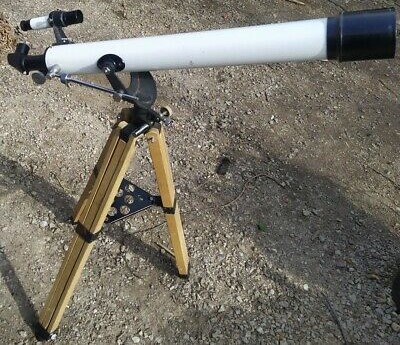
I discovered astronomy as a teenager in the late 70s after purchasing my first 24x36mm SLR, a film camera, the Pentax MX. To minimize exposure time I also bought a Pentax SMC 50mm f/1.4 lens and photographed the constellation Orion during a 2-3 minute exposure at full aperture. Celestial tracking was done by setting the camera up on a double 48 ° tilted plane (A4-size plywood panel) whose right ascension axis was pushed by manually turning a threaded rod. The difficulty was to turn the screw at the same speed as the earth’s rotation but with a little practice it worked fine and besides a few Ektachrome slides are still in my possession.
Always so enthusiastic, I had the chance to get for Christmas a 60/700 mm achromatic lens (Persée model made in Japan and distributed by the European Astronomical Circle based in Paris). Its usage was more likely dedicated to the planetary, lunar and solar visualization. Probably partly frustrated by the results and also by the lack of personal availability I put astrophotography on hold for many years. Fortunately the arrival of digital technology has changed everything and allowed me to come back to my hobby on 2003 when I bought a used Celestron Celestar 8 inch telescope with a motorized right ascension. I fixed a Canon Optura 200MC digital DV camcorder on it and then I was able to film Mars in opposition, Jupiter and Saturn and familiarize myself with the principles of image stacking and aligning with the Registrax software. I got encouraging results but not enough to pursue seriously. I had to wait until 2018 to get all satisfaction when, after some search on internet, I bought a CMOS camera from Z.W.O. and some useful accessories.
Since then I haven’t stopped exploring the universe just above me and I admit that I’m still amazed by the diversity of the objects in the sky and the quality obtained even with modest equipment. I hope you will appreciate my modest work that I have decided to share with you through a website.
